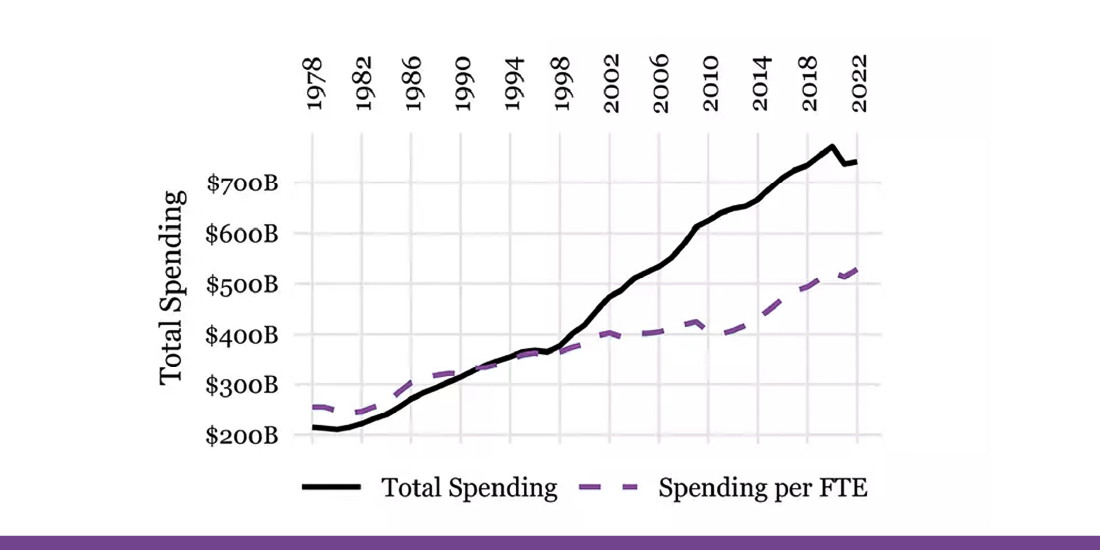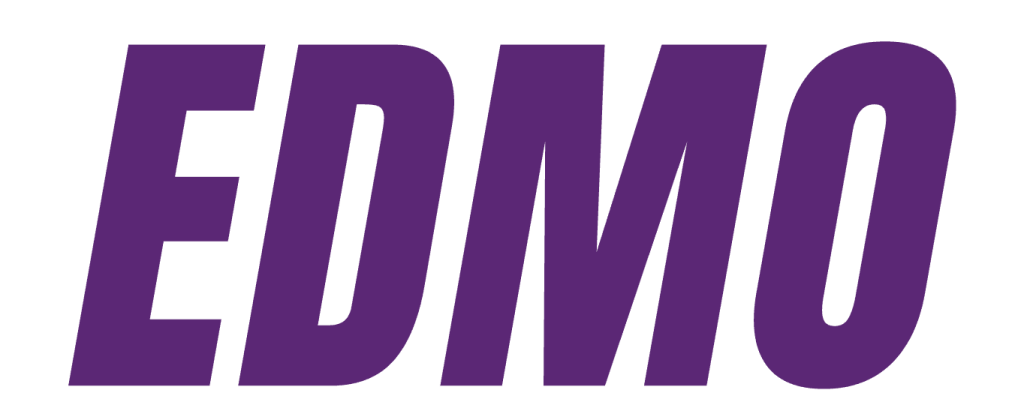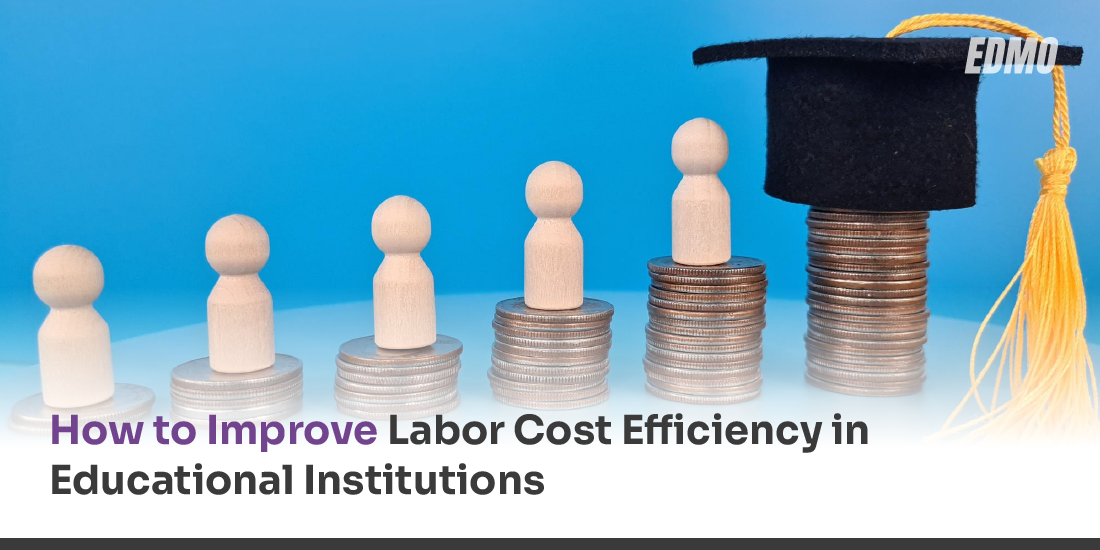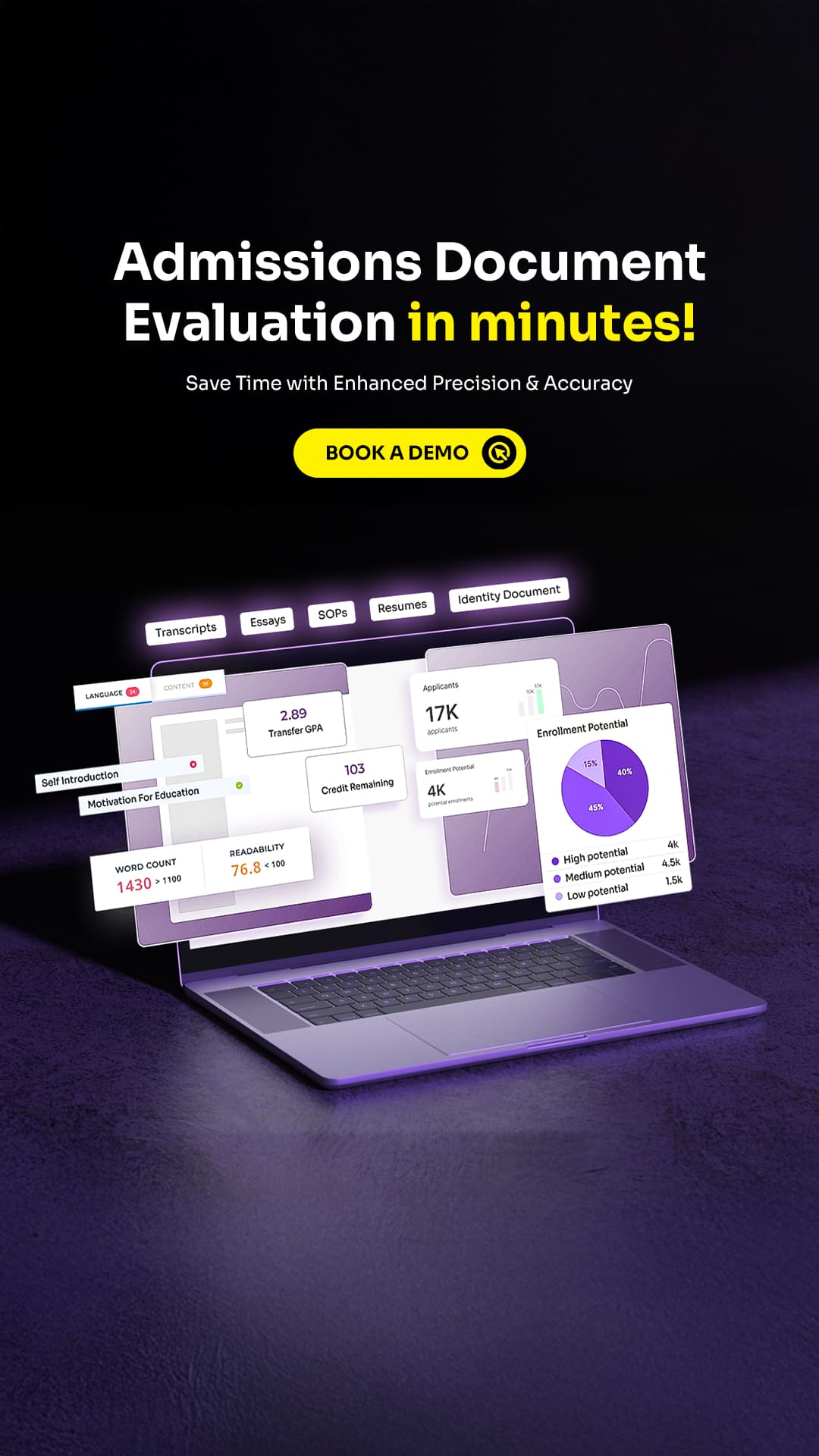Table Of Contents
Introduction
Labor costs quietly shape the financial heartbeat of higher education, and people power drives everything, but it also drives the bills. Labor accounts for nearly 70% of total university spending, according to the National Centre for Education Statistics (NCES). With postsecondary expenditures soaring past $712 billion in 2022, every hour and headcount matters.

That’s why leading institutions like Arizona State University are turning to automation and predictive analytics—slashing manual workloads and saving millions. In fact, McKinsey reports that AI-powered workflow automation can cut administrative labor costs by up to 30%, giving universities the bandwidth to focus on what truly matters, student success and innovation.
Understanding Labour Cost Efficiency in Higher Education
Labor cost efficiency in higher education focuses on optimizing staff productivity and resource allocation, ensuring quality education delivery while managing budget constraints amid declining enrollments and rising operational costs.
Labour Dominates Institutional Budgets
According to the U.S. Department of Education, over 60% of university expenses go toward salaries and benefits, underscoring the importance of workforce management for financial sustainability.
AI and Automation Reduce Administrative Costs
McKinsey (2024) reports that AI-driven automation can cut administrative labor costs by up to 30%, streamlining tasks like admissions, payroll, and scheduling.
Shared Service Models Boost Efficiency
Universities adopting centralized HR, IT, and finance operations, like the University of California system, have achieved 10–20% cost reductions through economies of scale.
Data-Driven Workforce Planning
Institutions using predictive analytics for staffing (e.g., Arizona State University) optimize faculty loads and reduce overtime costs while maintaining instructional quality.
Hybrid and Flexible Work Models
Post-pandemic shifts to remote and hybrid operations have lowered facility costs and increased productivity, with educational staff efficiency up by nearly 15% in hybrid environments.
Analyze and Optimize Workforce Planning
Effective workforce planning in higher education ensures the right people are in the right roles at the right time—boosting efficiency, reducing costs, and aligning staff resources with institutional goals.
Conduct Data-Driven Staffing Analysis
Use analytics to assess faculty workloads, class sizes, and administrative functions. Identifying redundancies and imbalances helps reallocate resources effectively and cut unnecessary labor costs.
Forecast Future Talent Needs
Leverage predictive modeling to anticipate future staffing requirements based on enrollment trends, program growth, and retirements, ensuring proactive recruitment and balanced staffing.
Align Workforce with Strategic Priorities
Ensure faculty and staff distribution supports institutional goals—like student success, research, and digital transformation—rather than legacy structures or outdated staffing patterns.
Automate Workforce Management Processes
Adopt AI-based scheduling and HR tools to automate manual processes such as shift allocation, workload tracking, and leave management, reducing administrative overhead.
Invest in Cross-Training and Upskilling
Train staff to handle multiple roles or digital tools, increasing workforce flexibility and reducing dependency on additional hires during high-demand periods.
Benchmark Against Peer Institutions
Compare staffing ratios, costs, and productivity with peer universities using tools like HelioCampus or CUPA-HR benchmarks to identify improvement areas and optimize efficiency.
Select from Short- and Long-Term Strategies Based on Financial Condition
Institutions must align workforce decisions with their current financial health and future goals to maintain stability and sustainability.
Short-Term Strategies
Focus on immediate cost control — such as hiring freezes, reducing overtime, optimizing class sizes, and implementing workflow automation to improve efficiency without layoffs.
Long-Term Strategies
Invest in sustainable initiatives such as digital transformation, faculty development, and predictive workforce planning to build operational resilience and generate long-term savings.
Balanced Approach
Data-driven analysis helps universities decide which mix of strategies—short-term containment or long-term investment—best supports both financial recovery and academic excellence.
Top Strategies for Managing Labour Costs in Higher Education
Labour costs account for nearly 70% of total spending in U.S. higher education institutions. As enrollment trends fluctuate and budgets tighten, managing workforce efficiency has become essential for institutional sustainability. By leveraging automation, analytics, and strategic planning, universities can optimize labor spending while improving productivity and student outcomes.

Automate Administrative Tasks
Use AI-powered tools to handle repetitive processes — such as admissions, payroll, and document verification—to reduce manual effort and improve speed.
Example: Automation can cut operational costs by up to 30%
Optimize Faculty Workload and Scheduling
Analyze teaching loads, course enrollments, and student demand using predictive analytics to ensure equitable distribution and prevent overstaffing.
Example: Arizona State University saved $2M annually through analytics-driven workload management
Centralize HR and Finance Operations
Consolidate HR, payroll, and budget management systems across departments to eliminate duplication and improve data accuracy.
Result: Streamlined processes and reduced administrative headcount.
Implement Cross-Training Programs
Train staff across multiple roles or departments to boost flexibility during peak seasons and reduce reliance on temporary hires.
Result: Increased efficiency and lower recruitment costs.
Use Data for Strategic Workforce Planning
Leverage analytics to forecast staffing needs, retirements, and enrollment shifts to ensure right-sized teams aligned with institutional goals.
Result: Better alignment of labor with demand.
Review Compensation and Benefits Structure
Regularly audit pay scales and benefits to ensure competitiveness while avoiding overspending on non-critical roles.
Result: Balanced cost management without hurting retention.
Invest in Technology for Long-Term Savings
Adopt cloud-based HR, CRM, and SIS systems that reduce manual workload, improve collaboration, and enable data-driven decisions.
Result: Sustainable reduction in labour and operational costs.
Summary
People remain the cornerstone of every university’s success—but managing labour efficiently is key to long-term sustainability. With nearly 70% of budgets devoted to personnel, higher education leaders must look beyond cost-cutting and focus on smarter operations. By adopting automation, cross-functional training, and data-informed workforce planning, institutions can enhance productivity while maintaining academic excellence. Universities like Arizona State University demonstrate that strategic efficiency doesn’t diminish human value—it amplifies it. When technology and talent work in harmony, institutions can reinvest savings into innovation, research, and student success, ensuring a stronger and more resilient future for higher education.








No comments yet. Be the first to comment!
Leave a Comment